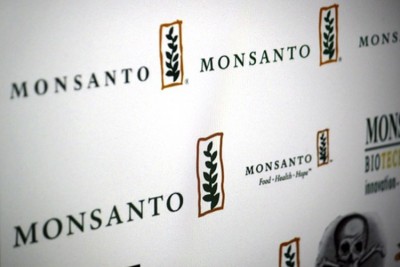
Monsanto, the US-based biotech and agribusiness colossus, is seeking a merger with its European competitor Syngenta. Such a transaction would create a gargantuan corporation that would control 45% of the world’s commercial seeds and 30% of the farm chemicals market. This is a time of major mergers in the ag sector. The largest of these took place last November, when two of the largest US players, Dow and Dupont, agreed to merge. The resulting spawn of both will have no less than 25% of the world commercial seed market.
The much-talked about Monsanto-Syngenta merger is likely but not inevitable. Monsanto began 2016 with its third buyout offer to the European corporation in less than a year. Syngenta’s management announced it will not decide on Monsanto’s latest bid right away because it is considering other offers. In a conference in Switzerland in mid-January, company chairman Michael Demare said it is evaluating proposals from German companies BASF and Bayer, which are also world leaders in the agricultural biotech and pesticide sectors, and from ChemChina.
Although not very well known in North America and Europe, the Chinese state-owned ChemChina is one mammoth of a corporation. With $45.6 billion in annual revenues and some 140,000 employees, it ranks 265th in the Fortune 500 index.

ChemChina became a pesticide powerhouse in 2011 when its subsidiary, China National Agrochemical Corporation, acquired Makhteshim Agan Industries (Israel), the world’s 7th largest pesticide manufacturer, and became ADAMA”, said the Canada-based ETC Group. “With revenues over $3 billion in 2013, ADAMA sells generic pesticide products in more than 120 countries… ADAMA’s largest market is Europe (37%), followed by Latin America (25%). (Parentheses in original)
ChemChina’s interests go way beyond agrochemicals. Last year it acquired Italy’s Pirelli, one of the world’s leading tire manufacturers, for $7.9 billion. Its other major purchases include French firms Adisseo and Rhodia, Australia’s Qenos, Norwegian silicon maker Elkem, German machinery maker Krauss Maffee, and 12% of Swiss energy trader Mercuria.
ChemChina is headed by the flamboyant Ren Jianxin, a high-ranking Communist Youth League member who took the unusual step of going into business rather than politics. “Over three decades, Ren has led the restructuring of China’s chemicals industry, organizing more than 100 firms under the ChemChina banner into six main operating divisions, producing everything from basic chemicals to fertilizers and silicones”, said Reuters. Ren recently hired Bayer director Michael Koenig to run one of ChemChina’s subsidiaries, a move that raised eyebrows since state-owned companies very rarely ever hire foreigners to executive positions.
The company is also looking to expand its presence in the domestic market. A merger with Syngenta would turn ChemChina into the country’s top pesticide company. This is no small undertaking, given that China is the world’s third largest pesticide market, after the US and Brazil. If foreign agrochemical companies were to be interested in investing in China’s vast market they would find themselves squeezed into a minor corner by a gigantic Syngenta-ChemChina combination.
ChemChina’s ambitions are part of a larger story. Chinese food and agriculture companies are moving abroad and starting to compete toe to toe with their Western counterparts and even buying them out. In 2013, China’s Shuanghui corporation bought Smithfield, the leading US pork company, for $7.1 billion, the largest ever purchase of a US company by Chinese investors.
Another Chinese company to watch is COFCO, the country’s leading food processor, which acquired a controlling stake in the Netherlands’ agricultural commodity trader Nidera. The majority stake in Nidera would give COFCO greater control over pricing and better access to Latin America and Russia, important grain-growing regions, the Wall Street Journal reported in 2014.
So what happens if ChemChina beats Monsanto to the Syngenta finish line? The Missouri-based company, which has been hitting hard times in the recent months, may end up trampled and squashed, unable to compete with a Dow-Dupont and a Syngenta-ChemChina.
According to the ETC Group: “No matter which mergers/acquisitions ultimately materialize, there’s little doubt that the infamous Monsanto name will soon be history.”
SOURCES
Owen Covington. “Syngenta board reportedly supports pursuing ChemChina deal” Triad Business Journal, January 19 2016.
http://www.bizjournals.com/triad/news/2016/01/19/syngenta-board-reportedly-supports-pursuing.html
ETC Group. “Breaking Bad: Big Ag Mega-Mergers in Play” December 15 2015.
http://www.etcgroup.org/content/breaking-bad-big-ag-mega-mergers-play
http://www.feedandgrain.com/news/why-chemchina-insists-on-acquiring-syngenta
Financial Times. “ChemChina closes in on another prize purchase”
http://www.ft.com/intl/cms/s/0/78d04e32-c26e-11e5-808f-8231cd71622e.html#axzz3yGS3Cp7E
Sophie Song. “China State-Owned Food Giant COFCO Corporation Spends Billions Buying Nidera” International Business Times, February 28 2014.
Carmelo Ruiz is a Puerto Rican author and journalist currently living in Ecuador. He directs the Latin America Energy and Environment Monitor, runs a bilingual blog on journalism and current affairs, and is a member of the directive commission of the Puerto Rico Socialist Front. His Twitter ID is @carmeloruiz.
Source Article from http://www.globalresearch.ca/the-likely-monsanto-syngenta-merger-and-the-chinese-factor/5504608
Related posts:
Views: 0
 RSS Feed
RSS Feed

















 January 31st, 2016
January 31st, 2016  Awake Goy
Awake Goy  Posted in
Posted in  Tags:
Tags: 
















